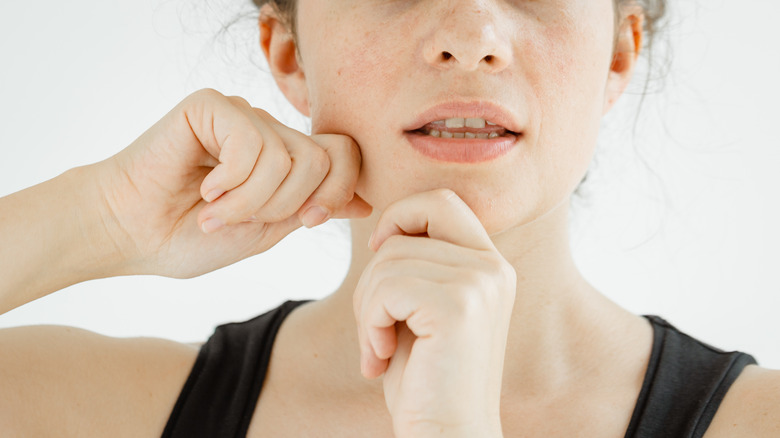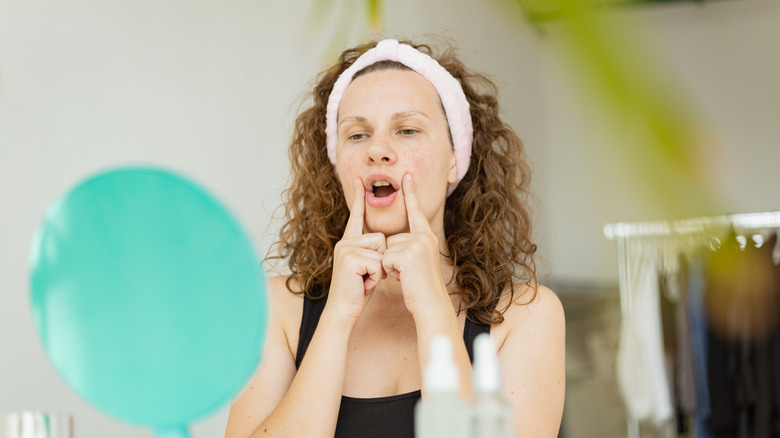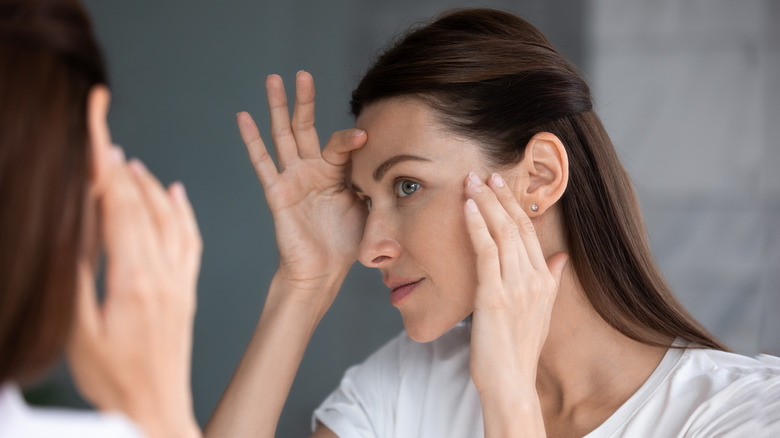What Really Happens To Your Face When You Do Facial Exercises
Your face might be the first thing that people notice about you. It could play a crucial role in making first impressions as well as their ability to guess your age. Like other parts of the human body with their own muscle sets, facial muscles are responsible for animating the face.
Facial muscles are also called craniofacial muscles. These are 20 flat muscles that cover the face and scalp and are located under the skin (via Kenhub). When contracted, craniofacial muscles pull the skin and exert their effects. The location and attachment pattern of these muscles allow the face to perform movements such as smiling, frowning, grinning, etc.
Since the face has muscles, a popular question is if they can be exercised. We are all familiar with body workouts and gaining muscle mass in the gym. Still, the concept of facial exercise is not as common. It is probably because we do not notice changes in our facial structure until we start aging. The more wrinkled a person is, the older they appear, and facial exercises are said to provide help with it. Facial exercises are simply repetitive motions and exaggerated emotions that could help in strengthening the face muscles (via Town & Country).
Here's how the face responds to facial exercises
The expression "aging like a fine wine" might be accurate, and facial exercises could be one reason for it. A 2018 study revealed that 20 weeks of facial exercises for 30 minutes every day helped middle-aged women appear three years younger by yielding firmer skin and fuller upper and lower cheeks. The exercises enlarged and strengthened the facial muscles and resulted in a firmer and toned face.
Face exercises can loosen up a tight scar by stretching and moving the muscles underneath it. According to Dr. Suzanne Olbricht, the thick skin of the scar becomes thinner by regular stretching and exercising, which might suggest that facial exercises are practical.
Theoretically, facial exercises can help with "gravity-related fat loss," per Olbricht. In addition, when aided with regular exercise — which can help stop fat from redistributing — facial exercises can help maintain the highlights and contours of your face. But seriously, how effective are facial exercises, and can they actually give you a more chiseled look?
Could the focus on facial exercises be misleading?
While facial exercises are said to have helped people achieve firmer skin, chances are that they might not be as effective as portrayed by different influencers and endorsers. Dr. Jeffery Spiegel, chief of plastic surgery and reconstructive surgery at Boston University School of Medicine, believes that facial exercises are a total bust (via Healthline). According to him, facial exercises may make your skin saggy instead of tightening it, and will make you look older as they involve stretching and loosening up your skin.
Dr. Suzanne Olbricht also feels that it is hard to say whether facial exercises are helpful or not. "The first thing to know is that there really aren't any good, rigorous, scientific studies that verify claims that face workouts are effective," Dr. Olbricht, who is associate professor of dermatology at Harvard Medical School, told Harvard Health Publishing. Dr. Olbricht added that claims around facial exercises improving the skin surface could have more to do with cosmetic treatments — such as chemical peel or microneedling — that target the skin surface, rather than actual exercises involving facial muscles.
The bottom line is, the results from facial exercises are not guaranteed, but you can go ahead and try them since there are no harmful side effects linked to them. Although there are no drawbacks and nor are facial exercises dangerous, people who might have undergone surgical procedures such as filler, cosmetic surgery, Botox, etc., are advised against performing these exercises.



